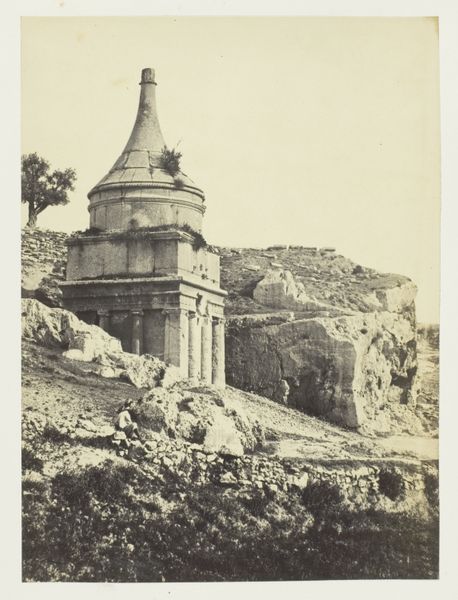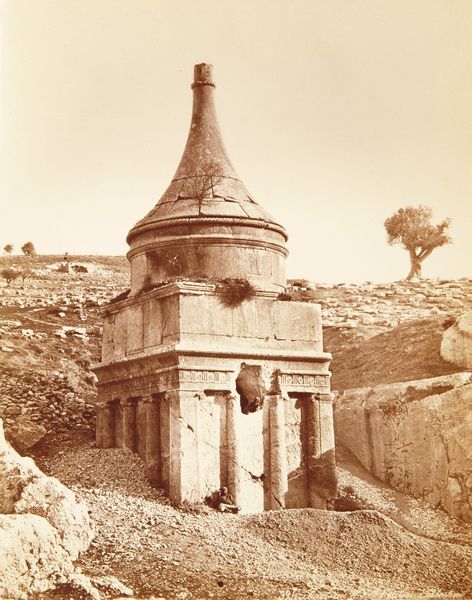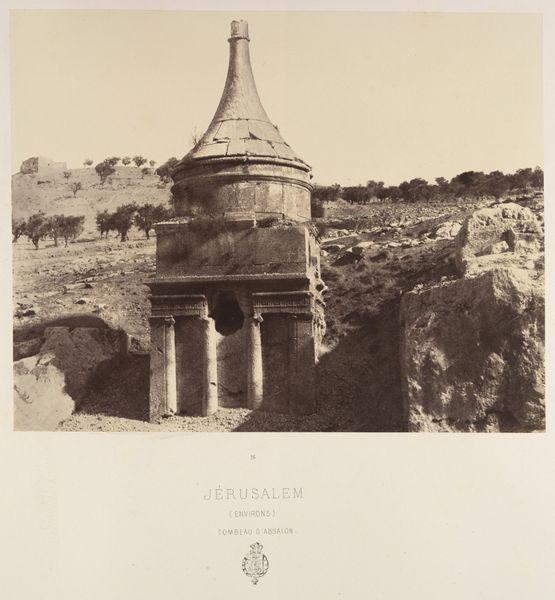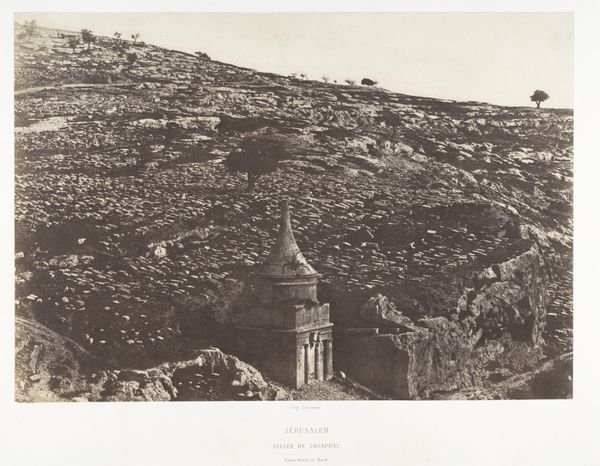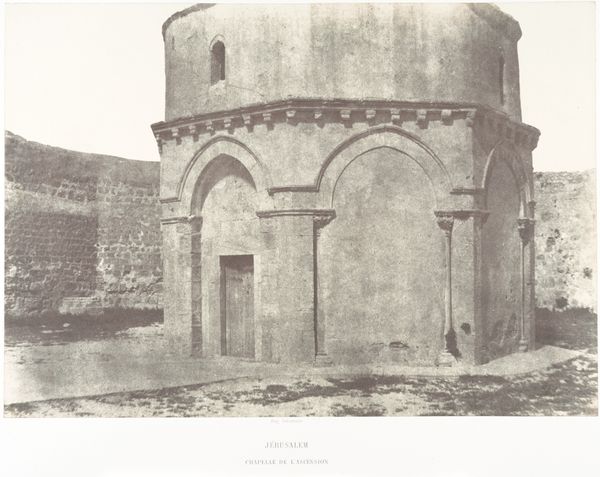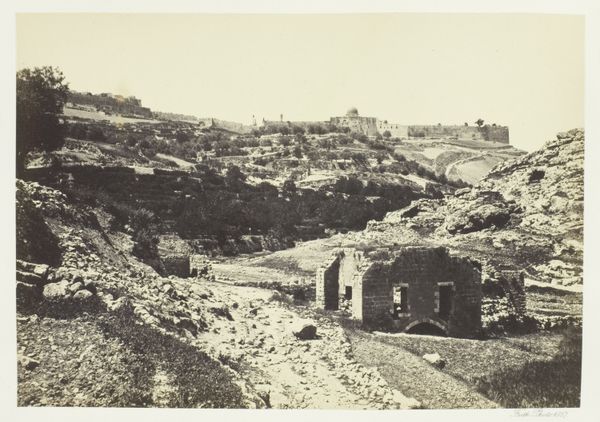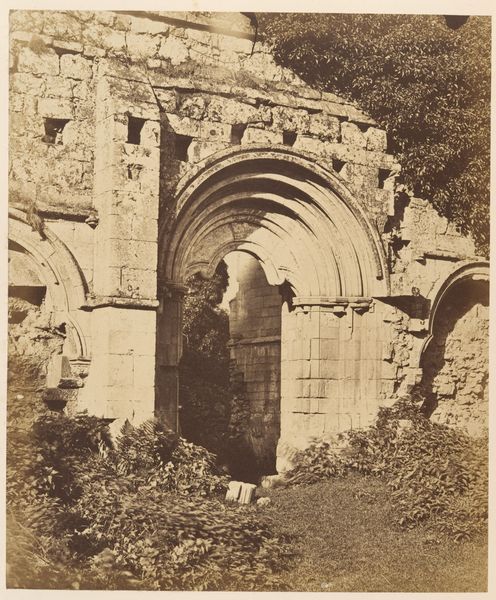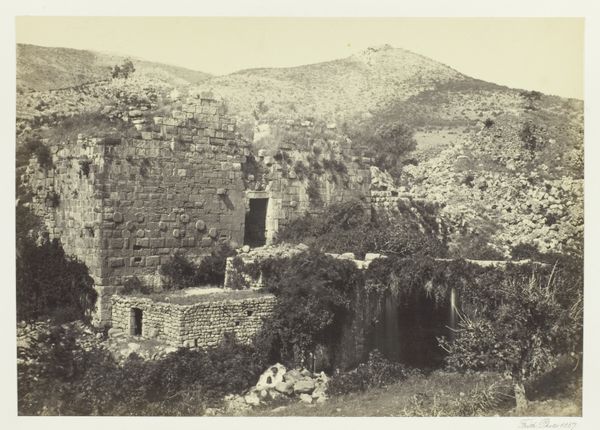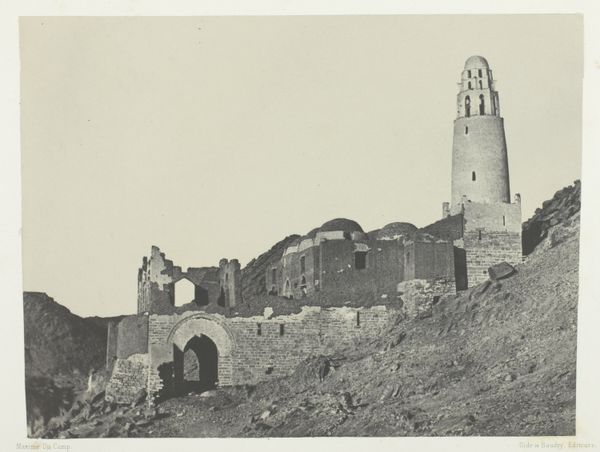
Jérusalem, Vallée de Josaphat, Tombeau d'Absalon 1854 - 1859
0:00
0:00
daguerreotype, photography
#
landscape
#
daguerreotype
#
photography
#
ancient-mediterranean
#
orientalism
Dimensions: Image: 32.2 x 23.2 cm (12 11/16 x 9 1/8 in.) Mount: 59.8 x 44.8 cm (23 9/16 x 17 5/8 in.)
Copyright: Public Domain
Curator: This is Auguste Salzmann’s daguerreotype, "Jérusalem, Vallée de Josaphat, Tombeau d'Absalon," created between 1854 and 1859. The print invites us to examine both its subject and its cultural context. Editor: It certainly does. My initial feeling is of a profound stillness and solitude. The stark tonality almost feels sepulchral, quite fitting for a tomb, actually. The monument in question commands the frame, while the hillside looks quite desolate. Curator: Absolutely. Salzmann's work fits into a larger Orientalist vision, of course, one often tied to colonial narratives. His photographs, commissioned with the purpose of documenting biblical lands, implicitly support those ideologies. Considering this work through that lens brings new meaning to the artist's act. Editor: Indeed, seeing it that way complicates my response. But irrespective of his colonial vision, Salzmann captured something of the monumental staying power that ancient places and structures radiate. That obelisk form resonates across so many different cultures and historical moments: Egyptian, Hellenic, and beyond. It evokes ideas of authority, sacredness, and memory, all coalescing into one easily-readable symbol. Curator: It's important, I think, to grapple with that complexity. His perspective—and by extension, his choices about composition and subject—are, of course, subjective and framed by his European identity and motivations. Editor: Yet that’s why these artifacts of vision endure: because we can debate and renegotiate those meanings with each new viewing. A photograph like this embodies multiple timelines at once: the moment of its making, the imagined past it seeks to represent, and our own engagement with it now. Curator: Agreed. It's an act of interpretation that connects the historical, social and political context surrounding Salzmann to our own understanding of that tomb, our understanding of Jerusalem and our understanding of ourselves. Editor: It allows us, then, to experience the symbolic weight and historical breadth that imagery continues to have, irrespective of its origin, on the contemporary imagination.
Comments
No comments
Be the first to comment and join the conversation on the ultimate creative platform.
